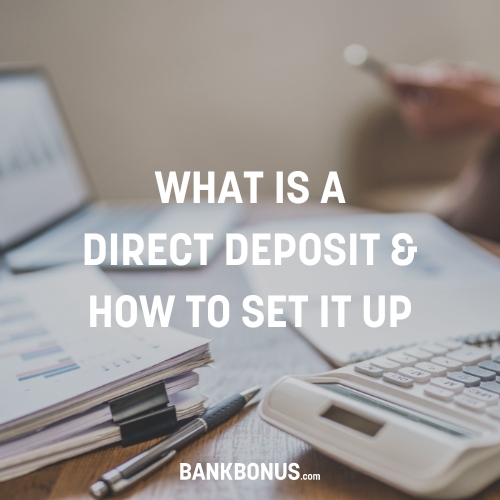Nothing is preventing you from signing up for 50 different bank accounts. But before you run off to do that, the question you should be asking isn’t can you open multiple accounts, but should you? And if so, should they all be with the same bank or different ones?
The first step is understanding the different types of bank accounts out there and what they can do to help you achieve your financial goals.
In this post, you’ll learn about the most popular bank account types, why it might make sense to have multiple accounts, and some things to watch out for if you take that route.
Why Have Multiple Bank Accounts?
Let’s first understand the benefits of having multiple bank accounts.
1. Increase liquidity while still putting money aside
The fundamental use case for having multiple accounts is to have a primary checking account, where you receive paychecks and pay your bills, linked to a primary savings account, where you set aside money for an emergency or for future big purchases.
Having these two accounts at the same institution and linked makes it fast and easy to transfer money between the two. Why not just have one checking account and keep all your money there?
Separating the savings bucket lets you track progress toward your goal and helps keep you accountable with smart habits. But, life happens, so making these first-level savings readily available helps keep it liquid when emergencies come up.
2. Meet multiple savings goals
Another use case for having multiple accounts is to unlock the ability to track multiple savings goals. For example, you can earmark one account for a down payment on a home, another for this year’s family vacation, and a third for emergencies.
The strategy lets you organize your goals, create a savings plan that fills each bucket, and easily monitor your progress toward each.
3. Earn bank sign up bonuses
Another reason some people have multiple accounts is that they’re transferring money around to earn welcome bonuses from banks.
In this scenario, you typically have a primary account that you hold long-term and additional accounts that you keep open only for as long as the bank requires you to have earned your bonus and not incur any early termination fees.
| Bank | Bonus | Expires | Requirements | |
|---|---|---|---|---|
| up to $3500 | December 31, 2025 |
|
Learn More | |
| up to 3.50% Bonus Interest Rate | December 15, 2025 |
|
Learn More | |
| $200 | January 14, 2026 |
|
Learn More |
4. Optimize FDIC coverage
If you’ve accumulated a lot of wealth, then you also need to consider protecting that money. The FDIC offers $250,000 of insurance for each individual, per depositing institution.
That means that if you have $750,000 in a single savings account, $500,000 of it could be at risk if the banking institute goes bankrupt. On the other hand, if you divide that money into multiple accounts, your entire stash is covered.
5. Enjoy unique perks from multiple banks
While most banks offer the same foundational benefits in each account category, they do vary beyond that.
For example, one account might have great international transfer rates, another might come with a rewards debit card, and another might offer account holders a discount on loan products.
Opening multiple bank accounts and using each when the situation makes sense keeps you from having to choose which perk is most important and foregoing the rest.
Most Common Types of Bank Accounts
Let’s now do a quick rundown of the most commonly held bank account types, so that you can better understand which you need.
Checking Accounts
A basic checking account is, in many ways, the foundation for your financial life. There are many types of checking accounts.
It’s typically the first account that you open and where most of your incoming and outgoing cash passes through. Most people use their checking account for short-term expenses like paying bills, making cash withdrawals at ATMs, and receiving direct deposits.
Checking accounts usually come with a debit card, physical checks, and online and mobile banking access. Monthly checking fees are often avoidable if you link the account with direct deposit or meet a monthly balance requirement.
The majority of banks offer a standard, no-frills free checking account, but here are some different account options:
Checkless Accounts
With the banking industry moving increasingly online, many banks now provide checking accounts without physical checks. These accounts are most often online-only.
The upside of using a checkless account is that it often comes with a few extra perks, such as a lower monthly fee structure and more flexibility on overdraft fees.
Age-Based Checking Accounts
Bigger banks often have checking accounts targeted to specific age groups (e.g., children, high school students, college students, and senior citizens).
These accounts have special features that address common issues of each age bracket. For example, with a student checking account, you can expect to have overdraft protection and no minimum balance requirements. Accounts for younger bankers typically have extra security features and robust guardian controls.
When it comes to senior checking accounts, many of them come with no monthly fees and free checks.
Premium Checking Accounts
A premium checking account offers perks that you don’t typically see with a standard account (e.g., more personalized service, discounts on services, exclusive offers, and more). In exchange, you can expect to maintain a higher minimum balance or pay higher monthly maintenance fees.
Interest-Bearing Checking Accounts
The main selling point of an interest-bearing checking account is that you can earn some money on your deposits. The earning rate depends on the annual percentage yield (APY), which is the interest percent you earn on your balance.
Interest is more commonly associated with savings accounts, which usually come with a higher APY.
Rewards Checking Accounts
Rewards checking accounts work much like cashback and rewards credit cards, but the rewards are based on your debit transactions, rather than credit card spending. For those who are leery of opening up a credit card, but still want to earn some rewards on spending, this type of account might make sense.
Savings Accounts
A savings account is your go-to account for stashing money away for long-term expenses or an emergency fund. Savings accounts are nearly always interest-bearing and best as a place for your money to sit and grow where you can’t easily access it.
Savings accounts are not for making everyday banking transactions. You typically also need a checking account that links up to it. You can withdraw cash or transfer money to your checking if you need to, but most savings accounts come with a federally mandated limit of six withdrawals per month.
Most savings accounts are relatively simple — deposit money and earn some interest. The main thing to consider is how much interest you can earn. High-yield savings accounts (HYSAs) are typically found in online-only banks and offer better interest rates than traditional savings accounts.
Money Market Accounts
A Money Market Account sits somewhere between a checking and savings account. Like savings accounts, they are usually interest-bearing. But unlike savings accounts, you have a little more flexibility when it comes to accessing your cash.
For example, some money market accounts come with a debit card for everyday spending. They also usually allow for more withdrawals and transfers than savings accounts.
Money Market accounts used to be known for offering better interest rates than standard savings accounts, but with the influx of competitive HYSA offerings, this isn’t always the case anymore.
Business Bank Accounts
If you run a small business or plan to in the future, you should probably look into a good business bank account. Most businesses require a separate checking account from the owner’s personal account.
These accounts’ funds are used for various business expenses, like inventory, payroll, and travel. Business accounts are generally tailored to small business owners’ needs and may come with added flexibility or perks to help move your business along smoothly.
Certificates of Deposit (CDs)
A CD is a long-term savings account where you deposit money for a fixed term in exchange for earning a fixed CD interest rate.
During the CD term, you cannot touch your money without risking an early withdrawal fee, which can easily wipe out any interest earnings you hope to achieve.
Banks offer many different CD options, with term lengths ranging from a couple of months to multiple years. The main benefit is the fixed interest rate feature. The downside is that you can’t touch your funds during the term.
Retirement Accounts
Retirement accounts are technically not bank accounts. They are long-term investment accounts that are designed to protect and grow your money until you retire.
Individual retirement accounts (IRAs), Roth IRAs, SEP IRAs, and 401(k)s are the most common form of retirement accounts.
You need to link up your main bank account (or direct deposit) to add funds. However, you can’t access those funds until you reach retirement age.
Until then, the idea is that your money can grow, thanks to compounding so that you have a nice pool of cash to tap into in your golden years.
What Bank Account Is Best For Me?
Now that you know about all of the different bank accounts that are out there, let’s look at how to narrow down your choices.
The Type of Bank You Want
The banking industry is at an interesting crossroads. Large, traditional banks like Chase, Bank of America, and Wells Fargo still control a huge amount of the market. But newcomer online banks are making serious headway.
Either way, all banks must be insured by the Federal Deposit Insurance Corporation (FDIC), which means that your deposits are protected in the event that the bank fails.
Let’s take a look at the differences between traditional banks, online banks, and credit unions, and what sort of accounts you can generally expect from each one:
Traditional Banks
With a traditional bank, you get all of the commonly associated services with a bank — a physical location, tellers and advisors, and the bank’s own ATM network.
Traditional banks also tend to have a ton of account options and a whole suite of financial services for you to take advantage of.
Unfortunately, bigger banks are notorious for microscopic interest rates, and many of them charge fees at every turn. The level of customer service you can expect to get also varies from bank to bank.
Online Banks
Online-only banks, such as Ally or Chime, don’t have the overhead costs associated with physical buildings or employees to staff them. As a result, online banks have a lot more flexibility when it comes to serving their customers.
The typical watermarks of online banking are low or no fees and higher interest rates. Online banks generally don’t have their own ATMs, so they’ll either reimburse you for fees or have a partnership with an external network, such as Allpoint.
The main potential trade-off with an online bank is that you can’t pop into the bank and meet with someone in person when you need help.
Online banks do have extensive customer service platforms, both online and over the phone, but if in-person support is important to you or frequently use cash, they might not be a good fit.
Credit Unions
Credit unions are community-driven alternatives to banks that are nonprofit and value-driven.
The appeal of a credit union is that it comes with a lot of the benefits of a traditional bank, but with a more personalized feel.
You can almost always find products to meet any typical “banking” needs, including checking and savings accounts and loans. And larger credit unions will offer much more than just these basics.
As a general rule, however, you most likely won’t find a list of account options and services quite as extensive as what you’ll find at a big bank.
Is The Bank Offering Any Sign Up Bonus?
All banks want your business and are actively working on getting it. With this in mind, many banks offer perks when you sign up for a new account (e.g., bank sign-up bonuses, or no fees during an introductory period).
If you’re looking for a long-term account versus just moving money around temporarily to earn this bonus, then we don’t recommend letting the bonus be the main driving force when choosing the account. Sure, they can help narrow down your choices, but you first have to make sure that the financial institution aligns with your long-term banking needs.
Another thing to consider: if a bank offers a $200 sign-up bonus but then charges a $15 monthly maintenance fee after that, that sign-up bonus effectively cancels out after 13 months. So you will wind up paying much more than $200 in the long run if you remain a customer for many years.
Beware of Fees
When you’re choosing a new account, always be sure to understand whatever fees you might run into and how to avoid them.
For example, monthly maintenance fees, ATM fees, overdraft fees, and money transfer fees are common with bank accounts, especially with larger, traditional banks.
These fees might not look insanely high, but they can add up quickly if you have an account that isn’t right for you. Be sure to understand the minimum balance requirements for any new account.
If meeting a minimum balance requirement will be an issue, avoid that type of bank account at all costs. If you commonly overdraft your account, make sure to avoid working with a bank that charges hefty overdraft fees.
Fees are never fun and can make budgeting tough, but the good news is that there are plenty of no-fee accounts out there. As for bank accounts that do charge fees, there are often ways to avoid checking account fees if you are careful.
Many checking account providers, for example, waive monthly maintenance fees if you receive a monthly direct deposit or maintain a minimum balance.
How the Interest Compares
When it comes to interest, APY is the name of the game. The higher the APY in any account, the more you stand to earn by just letting your money sit there. This is particularly important when selecting a high yield savings account.
Interest might not seem all that important when you’re just starting out, but as you build up your account, a good interest rate can make a huge difference in your financial future.
While high yield savings accounts are known to offer the best APYs in the business, you can often find solid rates with money markets, too.
How Many Bank Accounts Can You Handle?
Let’s face it: not everyone is organized and responsible. If you are the type of person who is very diligent, and you never miss a bill payment, you might be able to handle having more accounts open than someone who is not.
This is an important consideration because if you don’t stay on top of your bank accounts, you can get into financial trouble.
Imagine a scenario where you have an old checking account from your hometown. Several years have passed, and you now live in a different city and open up a new bank account nearby.
You forgot that you only have $10 left in your old account and accidentally make an online purchase using your old account, which overdrafts it. If you aren’t monitoring your old account, you might not realize that it’s in the negative and occurring daily overdraft fees.
Making matters worse, you aren’t getting notices about these fees because you moved and didn’t check your old email address. Furthermore, if you aren’t monitoring each bank account’s daily transactions, you might not pick up on a suspicious transaction or incorrect charge amount.
Unfortunately, these situations occur to thousands of people every day, and they can be very costly. The responsibility lies on you, and you alone, to properly manage your accounts.
How to Manage Multiple Accounts
Okay, you’re sold on the idea, but now you need to know how to manage multiple accounts responsibly. We recommend getting a personal finance app that lets you track your bank accounts in one place.
Not only will it help you stay organized, but it saves time compared to having to log in to each account individually to monitor activity.
There are many great personal finance apps you can use to track your bank accounts. Our favorite is Personal Capital. It’s free, easy to use, and will unlock valuable insights into your spending.
How Many Bank Accounts Should You Have?
As you can see, there’s a lot to consider when opening a new account, and the answer to how many or which ones to choose isn’t always simple.
My two cents: A good place to start is with an online checking account and an HYSA that link together for simple, automatic transfers. That adds up to two accounts.
Once these accounts are set as your foundation, beyond that, you have to decide where and how you want to invest your money. If it makes sense to open a business account or a fourth account for long-term wealth growth, that’s perfectly fine, too — so long as you stay on top of all of them.
Reflect on your personal financial goals and go with that amount of bank accounts that makes sense for your specific situation.
Once you figure out what you want and what you need in a banking partner, the decision should be much easier to make.





Comments are closed.
Comments are closed here.